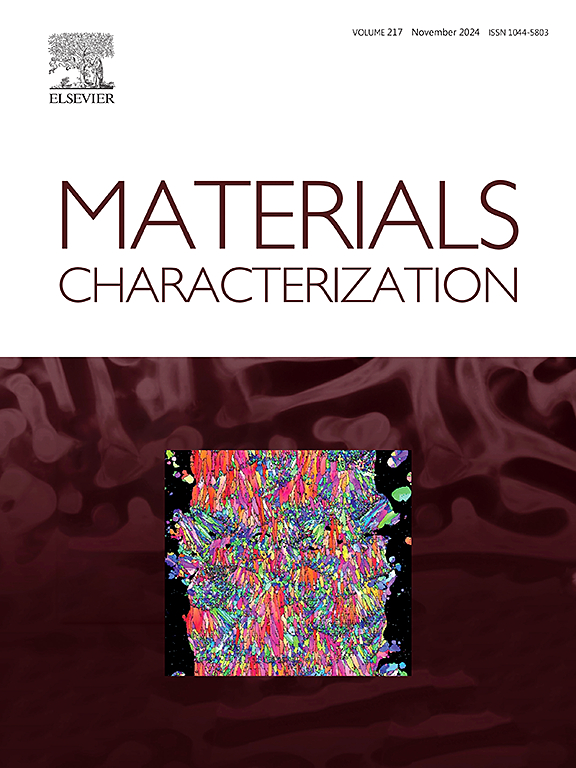Enhancing mechanical properties and microstructure evaluation in lap welding joint of 5754/6061 dissimilar aluminum alloys via laser-CMT hybrid welding
IF 4.8
2区 材料科学
Q1 MATERIALS SCIENCE, CHARACTERIZATION & TESTING
引用次数: 0
Abstract
This study pioneers the application of Laser-cold metal transfer (CMT) hybrid welding and CMT welding techniques to weld 5754/6061 dissimilar aluminum alloys. A systematic comparison of the two joints under the same heat input is conducted, covering macroscopic morphology, analysis of droplet force, microstructure evolution, interfacial microstructure, and mechanical properties. The findings reveal that the Laser-CMT process modifies joint geometry and wetting, affecting grain growth and element diffusion. It remarkably improves joint mechanical properties. Compared to CMT, the maximum tensile load rises by 29.3 %, elongation by 18.3 %, microhardness by 6.3 %, and the joint tensile strength reaches 275.9 N/mm. This research further postulates the strengthening and formation mechanisms of Laser-CMT joints. The work is expected to provide technical and theoretical references for precisely controlling the geometry, interface, and mechanical properties of dissimilar aluminum alloy lap joints, and for optimizing the connection process of dissimilar materials for various applications.
激光- cmt复合焊接提高5754/6061异种铝合金搭接接头力学性能及组织评价
本研究开创了激光冷金属转移(CMT)复合焊接和CMT焊接技术在5754/6061异种铝合金焊接中的应用。对两种接头在相同热输入条件下的宏观形貌、液滴力分析、微观组织演变、界面微观组织和力学性能进行了系统比较。结果表明,激光- cmt工艺改变了节理的几何形状和润湿性,影响了晶粒的生长和元素的扩散。显著改善了接头的力学性能。与CMT相比,最大拉伸载荷提高29.3%,延伸率提高18.3%,显微硬度提高6.3%,接头抗拉强度达到275.9 N/mm。本研究进一步提出了激光- cmt接头的强化和形成机制。为异种铝合金搭接接头的几何、界面和力学性能的精确控制,以及异种材料在各种应用中的连接工艺优化提供技术和理论参考。
本文章由计算机程序翻译,如有差异,请以英文原文为准。
求助全文
约1分钟内获得全文
求助全文
来源期刊

Materials Characterization
工程技术-材料科学:表征与测试
CiteScore
7.60
自引率
8.50%
发文量
746
审稿时长
36 days
期刊介绍:
Materials Characterization features original articles and state-of-the-art reviews on theoretical and practical aspects of the structure and behaviour of materials.
The Journal focuses on all characterization techniques, including all forms of microscopy (light, electron, acoustic, etc.,) and analysis (especially microanalysis and surface analytical techniques). Developments in both this wide range of techniques and their application to the quantification of the microstructure of materials are essential facets of the Journal.
The Journal provides the Materials Scientist/Engineer with up-to-date information on many types of materials with an underlying theme of explaining the behavior of materials using novel approaches. Materials covered by the journal include:
Metals & Alloys
Ceramics
Nanomaterials
Biomedical materials
Optical materials
Composites
Natural Materials.
 求助内容:
求助内容: 应助结果提醒方式:
应助结果提醒方式:


